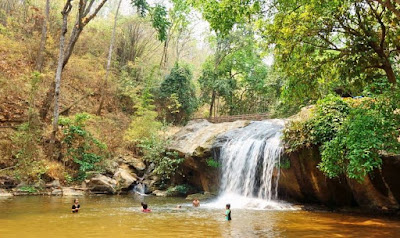Uniworld Boutique River Cruise Collection, a United States-based international cruise line, will soon launch another river cruise ship that will ply the waters between Cambodia and Vietnam.
As reported in ‘World of Cruising’, Mekong Jewel, which is among four “super ships” that Uniworld will launch next year, will ferry passengers between the two countries starting January 3 next year.
Mekong Jewel will replace its sister ship, Mekong Navigator, which has been in operation in the Mekong since 2017. The Mekong Navigator, which can carry 68 passengers, is famous for a design that mirrors that of manors that lined Saigon (now Ho Chi Minh City) during the French colonial era.
Mekong Jewel will replace its sister ship, Mekong Navigator, which has been in operation in the Mekong since 2017. The Mekong Navigator, which can carry 68 passengers, is famous for a design that mirrors that of manors that lined Saigon (now Ho Chi Minh City) during the French colonial era.
According to an article in ‘Cruise Critic’, Uniworld CEO Ellen Bettridege said the company is putting the best ships out there. “Our ships are absolutely unique and, like a boutique hotel, reflect the destinations they serve, from decor and artwork to food, beverage, and programming,” she said.
“We look forward to making our high-caliber service and personalisation in these remarkable destinations even better,” she added.
Mekong Jewel will traverse the Mekong from its homeport in Ho Chi Minh City.
The Mekong Jewel’s 13-day itinerary brings it from Ho Chi Minh City to Siem Reap in Cambodia, with stops in Phnom Penh and other tourist destinations in both countries, including the world-famous Angkor Wat.
Kampong Cham and several river towns in Vietnam like Vinh Long and Cai Be, where Mekong Navigator used to make stops, could also be part of the itinerary.
According to the official website of Uniworld, Mekong Jewel can carry 68 passengers and is equipped with state-of-the-art facilities, including suite accommodation, an indoor swimming pool, an alfresco eatery, sauna, gym, library, and two lounges.
The ship is made out of eco-friendly materials.
A part of The Travel Corporation (TTC), Uniworld operates a fleet of more than 20 river cruise ships across the globe, including Europe, Russia, and China.
“We look forward to making our high-caliber service and personalisation in these remarkable destinations even better,” she added.
Mekong Jewel will traverse the Mekong from its homeport in Ho Chi Minh City.
The Mekong Jewel’s 13-day itinerary brings it from Ho Chi Minh City to Siem Reap in Cambodia, with stops in Phnom Penh and other tourist destinations in both countries, including the world-famous Angkor Wat.
Kampong Cham and several river towns in Vietnam like Vinh Long and Cai Be, where Mekong Navigator used to make stops, could also be part of the itinerary.
According to the official website of Uniworld, Mekong Jewel can carry 68 passengers and is equipped with state-of-the-art facilities, including suite accommodation, an indoor swimming pool, an alfresco eatery, sauna, gym, library, and two lounges.
The ship is made out of eco-friendly materials.
A part of The Travel Corporation (TTC), Uniworld operates a fleet of more than 20 river cruise ships across the globe, including Europe, Russia, and China.
Source - Khmer Times















